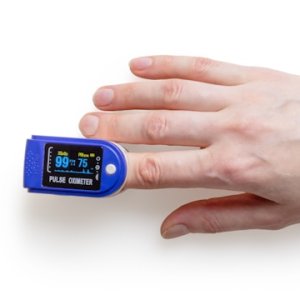Paving the Way for a Booming Medical Devices Sector

STORY INLINE POST
Q: What role is Mexico playing today as a worldwide medical device manufacturing hub?
A: Mexico has not been playing the role it should until now. Considering the size of the Mexican population and despite the country being a large manufacturer of medical devices the level of penetration on a national level is still small. The market for medical devices is becoming more important and represents an opportunity for Medtronic to close existing gaps in the commercialization and manufacturing process. We will be investing significant amounts of money in the next couple of years to enhance the role medical devices play in the continuum of care, including education, prevention, diagnosis, treatment and post-surgery. To contribute to the growth of this segment, we are not only bringing new medical devices to Mexico but also connecting the dots in the care process. In doing this, Mexico will hold a more strategic position for us in Latin America since our target is to double the size of our revenues within three to five years in the country.
Q: What would you say is the main reason for the low penetration of medical devices in Mexico?
A: The cause of the low-penetration level is multifactorial and Mexico is facing an epidemiological transition. In a period of four decades acute diseases have been overtaken by chronic ones and the system has not been able to adapt quickly enough to these changes. More education and professionals are needed in the country.
Despite the effort being made by COFEPRIS to improve efficiency to increase Mexico’s competitiveness, greater integration of the healthcare system is needed to move forward. In an ideal situation, Mexico would have just one system instead of a fragmented one. Patient education and awareness is also an important factor, which until only recently has become relevant. People need to take better care of their health and be taught more about diseases such as diabetes, hypertension and others.
Q: To what extent is healthcare considered a priority for the government and how do recent budget constraints impact the penetration of medical devices?
A: Mexico is spending only 6.2 percent of GDP on healthcare and half of that is out of pocket. Despite having a long way to go to improve this figure, I think current budgets and expenditure can be optimized to deliver treatments more efficiently. Companies need to collaborate with the government in important areas such as diabetes and cardiovascular care. We need to understand that there is no single actor that could come up with a solution for this problem alone and this is why the new message we want to get across after our merger with Covidien is “further together”. It is also crucial to understand the role that innovation plays in streamlining costs in the medium to long term. We need to change our mindset and become more responsible when it comes to healthcare investment as a combined challenge to do things better. In this way, the market for medical devices could double or triple.
Q: How should models such as shared risk and pay for performance be used to optimize budgets in healthcare institutions?
A: These models can be quite effective as long as they are implemented in a collaborative way. In the case of diabetes, despite representing a significant investment for the government the percentage of people achieving metabolic control is around 5-15 percent, and more can be achieved with the same amount of money but with a different approach. The government could certainly increase access and improve control if budgets were optimized. Implementing shared risk models should not be seen as a transaction but the parties involved should analyze existing problems and find solutions together. We are more than open and willing to work with models based on per capita expenditure, risk sharing, or guaranteed results. Integrated solutions also play an important role in optimizing costs. For instance, we help hospitals reduce 60-75 percent of the amount of products they need as we offer integral solutions instead of having different suppliers for a specific procedure. Medtronic is working with integrators, which are relatively unique to Mexico and have had a positive impact on the system. These integrators have already helped to increase efficiency in public institutions, and we want to work closely with them to move one step forward together. Integrators have a lot of data and information that can be used to really improve healthcare outcomes in an institution.
Q: How is the Medtronic–Covidien merger capitalizing on both companies’ capabilities?
A: We are the only medical device company providing full solutions for the most concerning ailments today such as diabetes, cardiovascular diseases and obesity. Following the merger, we are now able to offer a complete portfolio for hospitals and healthcare professionals and ultimately for patients. This has resulted from the combination of capabilities of both companies. For instance, Covidien had a strong portfolio for obesity surgery and since many obese patients also have diabetes, Medtronic’s expertise in diabetes helps to create an integral solution. Regarding manufacturing, Medtronic has six plants located in Baja California, Chihuahua and Sonora and 14,000 employees. Both companies are combining their technical competences to become better. This has resulted in the development of better products in a more efficient way, making Mexico more attractive for exporting. The products manufactured in our plants support sales of US$4-5 billion worldwide and we still need to work on how to use these capabilities to further grow in Mexico as a great deal of production goes to other countries. We are discussing with COFEPRIS and the Ministry of Economy the value these plants represent for the country. Manufacturing in Mexico has lower costs than in other countries but we need to find a way to benefit the country with these products.
Q: Can you share with us some of Medtronic’s cuttingedge devices?
A: We developed a heart rate monitor that is implanted in the patient’s chest allowing the physician to receive remote real-time data of the patient’s cardiac rhythm. In my opinion, innovation is only of true value when it helps make operations more efficient and reduce resource waste. IMSS receives millions of people every day, which is a clear sign that something needs to be done to optimize operations and costs. Many patients who come from other cities have to deal with frequent cancellations of medical appointments and suspension of laboratory services, which increases the amount of money spent on patient transport and accommodation. Sometimes these patients come only to be told they are in good health, so a more efficient approach can be taken. Devices like our monitor have the ability to inform physicians about the health status of patients. They are required to visit the hospital only when a problem is detected or suspected, reducing unnecessary costs and allowing patients to keep their normal activities on track while being monitored. It is commonplace that when a person has a heart attack a lot of time can pass from the moment the episode begins to the moment the patient receives medical attention. Technology can help reduce times by enabling physicians to know immediately the patient has had a heart attack and send an ambulance while preparing everything inside the hospital to treat the patient upon arrival. Just a 40-minute difference in such a scenario can be the difference between life and death.
Q: Where do you see Medtronic Mexico in the near future and how would you like to see the industry progress in the short term?
A: We are working toward Mexico playing a leading role in Latin America by expanding growth. To achieve this we will launch new products and technologies always keeping in mind their economic value and clinical outcomes. We will increase our capabilities to deliver products and valuable solutions for the public and private sectors, while we continue to expand our manufacturing capabilities, creating a hub for medical devices in Mexico. We want the medical devices sector to be as strong as automotive and aerospace in the country. The country needs to be able to capitalize on today’s opportunities in the segment and stakeholders need to collaborate to attract investment and the necessary resources to grow at an accelerated pace. More importantly, healthcare should become a priority for the government and a motor for economic development, driving productivity and competitiveness in the country. It seems the government is heavily focused on the O&G and automotive sectors. Nevertheless, there are companies like Medtronic employing 14,000 people in Mexico and representing strong actors in terms of job creation and investment. I think that more efforts can be made to help the government understand the relevance of this sector.























